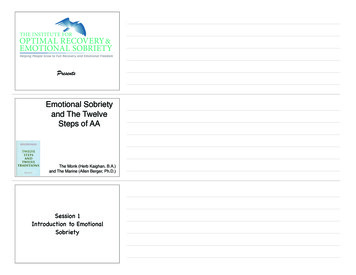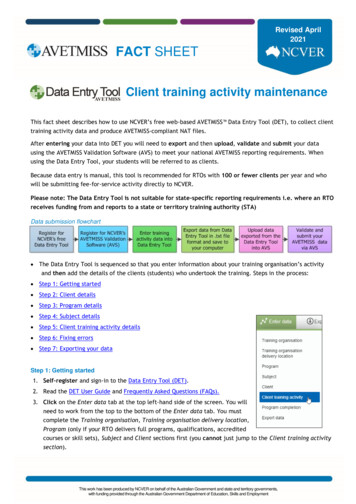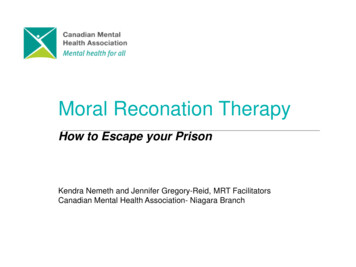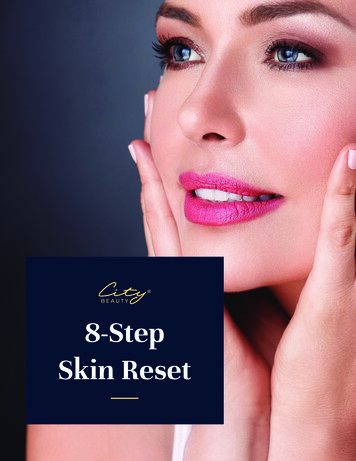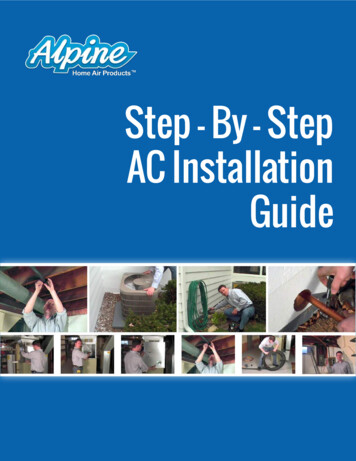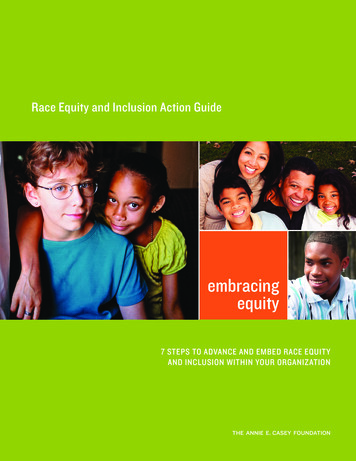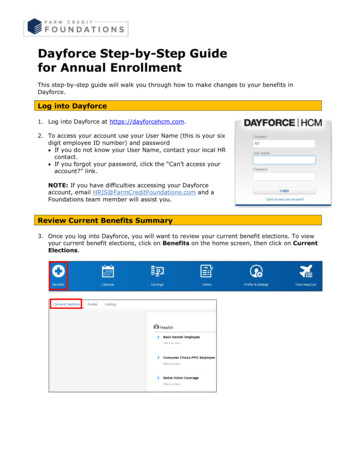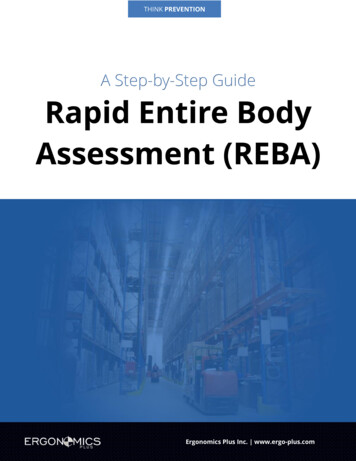
Transcription
THINK PREVENTIONA Step-by-Step GuideRapid Entire BodyAssessment (REBA)Ergonomics Plus Inc. www.ergo-plus.com
REBA: A Step-by-Step GuideRapid Entire Body Assessment (REBA)This ergonomic assessment tool uses a systematic process to evaluate whole bodypostural MSD and risks associated with job tasks. A single page worksheet is used toevaluate required or selected body posture, forceful exertions, type of movement oraction, repetition, and coupling.The REBA was designed for easy use without need for an advanced degree inergonomics or expensive equipment. You only need the worksheet and a pen. Onsecond thought, you probably should finish reading and studying this guide, and Isuppose a clipboard would help as well. Using the REBA worksheet, the evaluator willassign a score for each of the following body regions: wrists, forearms, elbows,www.ergo-plus.comPAGE 2
REBA: A Step-by-Step Guideshoulders, neck, trunk, back, legs and knees. After the data for each region iscollected and scored, tables on the form are then used to compile the risk factorvariables, generating a single score that represents the level of MSD risk:Getting ReadyThe evaluator should prepare for the assessment by interviewing the worker beingevaluated to gain an understanding of the job tasks and demands, and observing theworker’s movements and postures during several work cycles. Selection of thepostures to be evaluated should be based on: 1) the most difficult postures and worktasks (based on worker interview and initial observation), 2) the posture sustainedfor the longest period of time, or 3) the posture where the highest force loads occur.The REBA can be conducted quickly, so multiple positions and tasks within the workcycle can usually be evaluated without a significant time/effort cost. When usingREBA, only the right or left side is assessed at a time. After interviewing and observingthe worker the evaluator can determine if only one arm should be evaluated, or if anassessment is needed for both sides.www.ergo-plus.comPAGE 3
REBA: A Step-by-Step GuideUsing the REBA – ExampleThe REBA worksheet is divided into two body segment sections on the labeled A andB. Section A (left side) covers the neck, trunk, and leg. Section B (right side) covers thearm and wrist. This segmenting of the worksheet ensures that any awkward orconstrained postures of the neck, trunk or legs which might influence the posturesof the arms and wrist are included in the assessment.Score Group A (Trunk, Neck and Legs) postures first, then score Group B (UpperArms, Lower Arms, and Wrists) postures for left and right. For each region, there is aposture scoring scale and additional adjustments which need to be considered andaccounted for in the score.Steps 1-3: Neck, Trunk and Leg Analysiswww.ergo-plus.comPAGE 4
REBA: A Step-by-Step GuideNote: In step 2, a 2 score was used for trunk position (0-20 degrees) and 1 wasadded for the side bending adjustment (when viewed from behind, worker was leftside bending approximately 10 degrees) for a total score of 3.www.ergo-plus.comPAGE 5
REBA: A Step-by-Step GuideSteps 4-6: Calculate the score for Group A as outlined below:www.ergo-plus.comPAGE 6
REBA: A Step-by-Step GuideStep 4: Using values from steps 1-3, locate the score for this step in table A.Step 5: Add the force score to this box. In this case, the weight of the componentpart inserted by the worker is 11.5 lbs. Therefore, the score for this step is 1.Step 6: Add the values in step 4 and 5 to obtain score A. Find row for Score A inTable C and circle value.Steps 7-9: Right Arm and Wrist Analysiswww.ergo-plus.comPAGE 7
REBA: A Step-by-Step GuideNote: In step 7 the right upper arm is raised more than 90 degrees for a score of 4, a total adjustment of 2 is added because the shoulder is raised ( 1) and theupper arm is abducted ( 1) for a total score of 6. In step 8, a 2 score was useddue to the arm position outside of the neutral range. In step 9, a twistingadjustment of 1 was added to the position score of 2 for a total wrist score of 3.www.ergo-plus.comPAGE 8
REBA: A Step-by-Step GuideSteps 10-13: Calculate the score for Group B as outlined below:Step 10: Using values from steps 7-9, locate the posture score for this step in tableB.Step 11: Add the coupling score. In this case, the coupling is considered fair ( 1).www.ergo-plus.comPAGE 9
REBA: A Step-by-Step GuideStep 12: First, add the values in step 10 and 11 to obtain score B. Next, find columnin Table C and match with Score A in row from step 6 to obtain Table C Score.Step 13: The Activity Score is 1 due to job requiring small range actions (more than4x per minute). The Final REBA Score Table C Score Activity ScoreFinal REBA Score 9In this case, the final REBA score of 9 indicates high risk and calls for furtherinvestigation and engineering and/or work method changes to reduce or eliminateMSD risk (see table on page 1).After further investigation, it was determined by the worker and the departmentgroup leader that a different method could be used to perform this task. Seebefore/after pictures and new REBA results below:Previous MethodNew MethodA follow-up analysis using the REBA worksheet was performed. Using the new workmethod, the final REBA score was reduced from 9 to 4.www.ergo-plus.comPAGE 10
REBA: A Step-by-Step GuideAbout Ergonomics PlusErgonomics Plus was founded in 1989 as a one-man operation with the mission ofpreventing costly and painful musculoskeletal disorders and improving humanperformance for local companies. Since those humble beginnings, we’ve grown into anationwide consultancy, helping thousands of people across the United States remainhealthy and productive at work every day.Although we continue to grow and evolve as a company, our mission has never changed:We’re dedicated to helping you and the workers at your company achieve high levels ofhuman performance.About the Author: Mark Middlesworth, MS, ATC/L, CEESMark has been providing workplace injury prevention and ergonomicsconsulting services to industry since 1989. He is the founder of ErgonomicsPlus, author of Building Wellness from the Inside Out and a member of theNational Speakers Association.www.ergo-plus.comPAGE 11
Rapid Entire Body Assessment (REBA) This ergonomic assessment tool uses a systematic process to evaluate whole body postural MSD and risks associated with job tasks. A single page worksheet is used to evaluate required or selected body posture, forceful exertio
